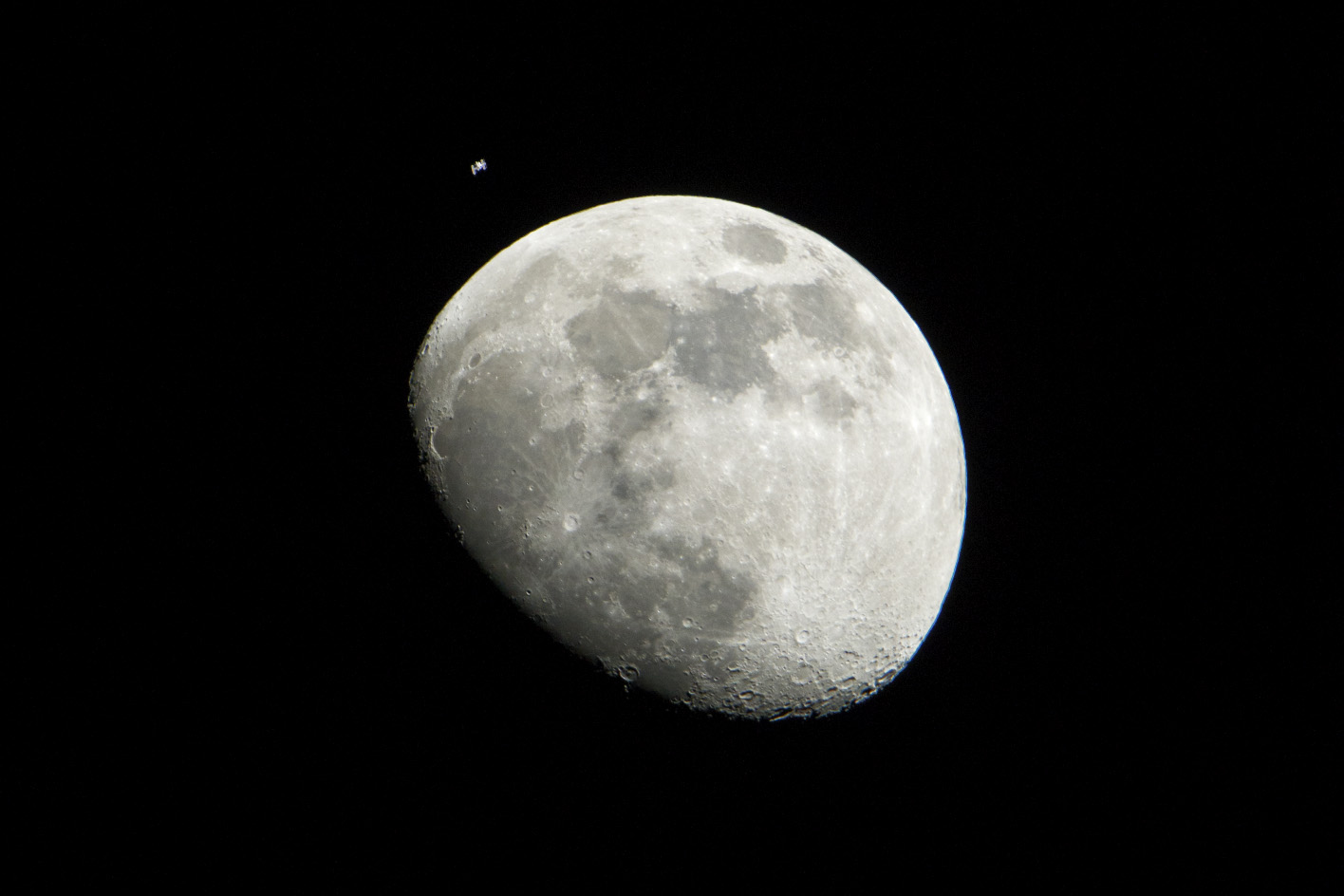This photograph, taken January 4, 2012 from Houston, Texas, juxtaposes Earth’s oldest satellite with one of its newest.
The big, old satellite is, of course, the moon. The tiny, new satellite – look up at the top left – is the International Space Station (ISS). If you have a hard time finding the ISS, see the labeled image below this one.


The moon is thought to have been formed about 4.6 billion years ago by the impact of a large body with the early Earth. In contrast, the first components of the ISS assumed orbit around the Earth in 1998, with assembly completed 13 years later.
Although in the picture the ISS looks like it’s fairly close to the moon’s surface, it’s just a trick of perspective. The moon orbits Earth at an average distance of 384,400 kilometers (238,855 miles), while the ISS orbits at altitudes ranging from approximately 330 to 410 kilometers (205 to 255 miles).
You can frequently see the ISS with your naked eye. It looks like a bright object moving rapidly across the sky.
The moon, of course, can also been seen with the naked eye, and you can sometimes even sometimes make out some of the major features of the lunar surface. (See the labels on the picture above.) You can look for the dark maria lowlands contrasting with the bright highland regions (or terrae). With moderate magnification, other features such as impact craters – for example, Copernicus and Tycho Craters – become clearly visible.
Space fans! Top five things to look forward to in 2012
Bottom line: This photograph taken January 4, 2012 from Houston, Texas, juxtaposes the moon with the International Space Station (ISS).











